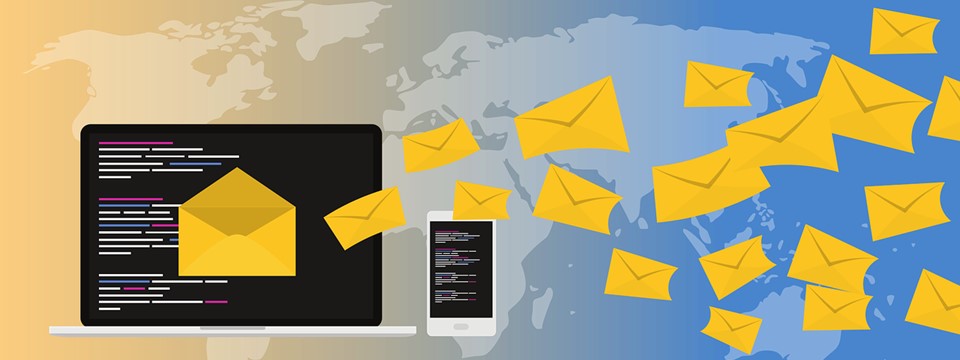
Whether you’re making a first impression on new clients, professional contacts and vendors, or reinforcing your reputation with colleagues, direct reports, bosses and other company stakeholders, your email etiquette matters.
According to technical market research firm The Radicati Group, the number of emails circulated worldwide per day is forecast to increase to more than 333 billion by the end of 2022. Suffice to say, email is an essential means of communication and how you use it reflects who you are personally and professionally.
Pay attention to these five areas of email etiquette to avoid communication missteps:
Do others have to follow-up with you because they haven’t received a response to an earlier email (or emails)? While you might feel overwhelmed by an overflowing inbox, if you often take too much time to get back to others -- or only do so after follow-up reminders -- it's time to change your email management strategy.
High-priority projects, meetings, travel, vacation etc. can sometimes cause legitimate response delays. However, if you're always delayed as a matter of habit, you can signal that you struggle with time management, prioritization or forgetfulness.
If you know you’ll be delayed, others (particularly new contacts) will appreciate a quick reply in which you acknowledge receipt and explain you’ll respond in-depth later. They might otherwise wonder if you even received their email (e.g., due to incorrect address or spam/junk mail settings).
If you’re on vacation, set up an away message to let others know when you’ll respond. This shows foresight and responsibility.
Timely replies are not just polite, they affect your professional reputation and personal brand, as well your company's brand. Don’t let poor response time negatively influence a client relationship, partnership, media opportunity etc.
Looking for a job? There’s no excuse for responding slowly (or not at all) to recruiters and hiring managers. Your inaction may take you out of the running for a position as you’re replaced by more responsive candidates. Even if you’re not interested in the job, reply in a timely manner anyway to make a positive impression. You never know if the recruiter will have the perfect position open for you in the future!
How Response Time Impacts Your Personal Brand
The tone and style of your message may vary depending on many factors, including your relationship with the recipient, subject matter, position and industry. Regardless of recipient, remember the following:
Above all, remember that emails are never 100% confidential. Recipients can easily forward your email, so avoid strong condescension, sarcasm and profanity, being too casual or curt. (While writing concisely is admirable, writing rudely isn’t!)
Executive Recruiter Tips - How To Stand Out As A Strong Candidate
One well-organized email is better than several in a row. Emailing isn’t the same as texting. Firing off multiple emails on the same topic to one person can annoy and aggravate the recipient. If you’re guilty of this, take a few extra minutes to think things through and organize your ideas before hitting send. If you have a lot of ground to cover, break it up with headlines and bullets.
Use CC when other parties need to be informed, updated or looped in on something. If you regularly CC your entire team or boss as a matter of course, pause to consider: is it necessary? (And if you CC as an act of passive aggression, then perhaps you need to address a larger issue.)
Use BCC when you want to inform others (and perhaps bring attention to a situation), but don't want the primary recipient to see that you're including anyone else. Use it cautiously, however, because if you don't know BCC recipients well, you don't know if they'll click “Reply All” (exposing that they received the original email), which could lead to conflict or embarrassment for you.
For any field, double check you’ve selected the correct recipient email before sending! It’s too easy to click on the wrong name, especially when faced with auto-fill suggestions from your address book.
Format your email signature cleanly with basic contact information in an easy-to-read font. Including too many lines of text and logo links, social media handles and promotional content is problematic because key things you want recipients to notice (or click on) get overlooked. Unless required by company brand guidelines, avoid including excess information, unconventional fonts and text colors (you will not be taken seriously if you use Comic Sans!) Speaking of company brand guidelines, your team should be on the same page with respect to what is and isn't included in your email signatures.
Review your contact information to ensure it’s as streamlined and readable as possible. At minimum, tighten text by removing labels, e.g., “Phone” or “Email.” At the same time, don’t omit important contact information altogether.
Additionally, personal pictures and inspirational quotes are inappropriate for work email. While it’s your email account, it’s still represents your company and should align with brand guidelines. Moreover, depending on how recipients receive email (plain text, Rich Text or HTML), image formatting may be affected or come through as an attachment.
When looking for a job, use a personal email, not a work email. (This should be obvious, but too many -- who know better -- still make this mistake!) Your personal email signature should include your email, phone number and link to your LinkedIn profile (no mailing address).
While email is a given in your professional life, use of it still requires care and attention. Your workplace email habits -- what you write, how well you write and how timely you are -- shape others’ impressions of you (and the company you represent).
Whether you want to grow your career through a job change, expand your network or strengthen your professional presence overall, conducting yourself well through email is a "must do" for your personal brand and career advancement.